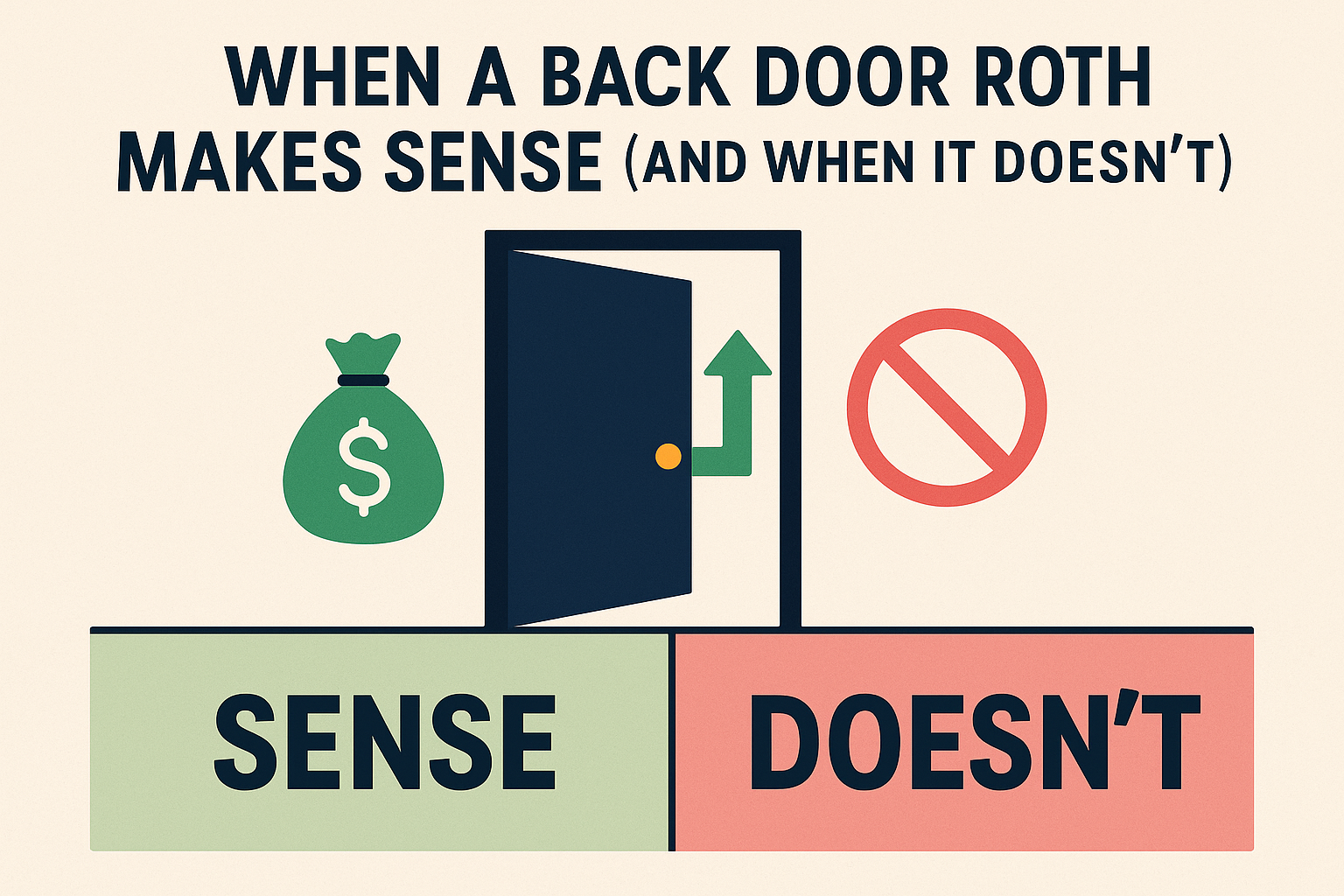How to Use a Back Door Roth IRA to Legally Bypass Income Limits
Roth IRAs Are Great — Unless You Make Too Much
Roth IRAs are the holy grail of retirement accounts: tax-free growth, no required minimum distributions, and zero taxes on qualified withdrawals. But if your income is too high, the IRS closes the door.
In 2025, the Roth IRA income phase-out starts at $146,000 for single filers and $230,000 for married couples filing jointly. If you’re over those thresholds, you can’t contribute directly — but there’s a perfectly legal workaround: the Back Door Roth IRA.
Let’s walk through how it works, why it’s allowed, and the traps you need to avoid.
1. Understanding Roth IRA Income Limits
The IRS sets income limits each year that determine eligibility for direct Roth IRA contributions. In 2025:
Filing Status Phase-out Begins Fully Ineligible at
Single $146,000 $161,000
Married Joint $230,000 $240,000
If your Modified Adjusted Gross Income (MAGI) is above these limits, the IRS prohibits direct Roth contributions.
So what’s a high earner to do?
2. How the Back Door Roth Works
The Back Door Roth is a two-step process that uses existing IRS rules — there’s no loophole, just smart planning.
Step 1: Make a Non-Deductible Traditional IRA Contribution
You’re allowed to contribute $7,000 in 2025 (or $8,000 if age 50+) to a Traditional IRA, even if you earn millions. The key is to make it non-deductible — you don’t claim a tax break now, so you don’t owe taxes later.
Step 2: Convert to Roth IRA
Soon after, you convert that Traditional IRA into a Roth IRA. Since the original contribution was after-tax and ideally there are no earnings, there’s little or no tax on the conversion.
✔️ Congrats — you just funded your Roth IRA.
3. Is the Back Door Roth Legal?
Yes. The IRS has explicitly acknowledged the practice. In 2018, IRS Notice 2018-54 confirmed that converting after-tax contributions is allowed.
However, there are critical compliance steps:
Form 8606: Tracks non-deductible IRA contributions
Form 1099-R: Documents the Roth conversion
💡 Pro Tip: Missing Form 8606 is one of the biggest audit triggers for this strategy. Always file it — even if you think it's not needed.
4. Watch Out for These Hidden Traps
⚠️ The Pro-Rata Rule
If you have other pre-tax IRA money (e.g., SEP, SIMPLE, or rollover IRAs), the IRS will apply a formula that blends all your IRA balances and creates a tax bill.
Example: If 90% of your IRA assets are pre-tax, 90% of your Roth conversion will be taxed.
⚠️ The Aggregation Rule
The IRS doesn’t treat each IRA account separately. It views all IRAs under your name as a single pool. This means you can’t “hide” pre-tax funds in a separate account.
⚠️ Timing Issues
If you wait too long to convert, your Traditional IRA might generate earnings. Those gains will be taxable when converted.
5. When a Back Door Roth Makes Sense (and When It Doesn’t)
✅ Best for You If:
You earn above the Roth limits
You have no existing pre-tax IRAs
You’re already maxing out your 401(k) and want more tax-free growth
You can handle some paperwork or work with a tax pro
❌ Not Ideal If:
You have large pre-tax IRA balances (due to the pro-rata rule)
You have access to a Mega Back Door Roth through your 401(k)
You’re unable or unwilling to handle extra tax forms
Summary: A Legal, Powerful Move for the Right Investor
The Back Door Roth IRA isn’t a loophole — it’s a fully IRS-compliant strategy for building tax-free retirement wealth when income limits block the front door. But it’s not one-size-fits-all. The risks around pre-tax balances and IRS forms can trip up even savvy investors.
🔎 Need Help Navigating the Back Door ROTH in 2025?
At Legacy Exits, we help high-income earners design tax-efficient retirement strategies that include Roth conversions, advanced planning, and coordination with your CPA or tax advisor.


